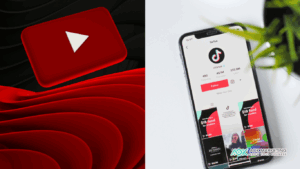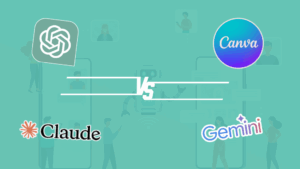By Dave Burnett, Online Marketing Expert at AOK Marketing
Last updated:
What is the main point of this article?
TL;DR: A combined organic and paid social media strategy delivers both immediate reach and long-term brand loyalty. Organic social builds trust and authority over time. Paid social drives fast, targeted conversions. Integrating both across awareness, consideration, and conversion phases maximizes your marketing ROI.
What is the difference between organic social media and paid social media?
Key Takeaways:
- Organic social media: Unpaid posts and engagement that build relationships and authority over time.
- Paid social media: Budget-backed ads that drive fast, precise reach and conversions.
- A balanced approach uses organic for trust and paid for speed.
Organic social media consists of the posts, stories, and interactions your brand publishes without ad spend. Organic posts remain on your profiles indefinitely unless removed.
Paid social media means allocating budget to promote content to targeted audiences on platforms like Facebook, Instagram, and LinkedIn. The budget determines reach and ad frequency.
Organic social builds loyalty, credibility, and community trust through consistent, value-driven content. Paid social delivers fast results and precise targeting for specific campaign objectives.
Combining both channels leverages organic content’s authenticity and paid media’s scale. Understanding each channel’s mechanics and metrics enables better resource allocation and improved ROI measurement.
External data shows organic reach on Meta platforms can drop below 5% of followers but still drives 1–3% engagement when done well Meta Newsroom, Sep 2021, Sprout Social, 2024.
Is organic social media reach declining?
Many believe organic reach is dead due to algorithm changes on major platforms. In reality, reach has declined but not vanished. Meta reports that business Page posts now reach as little as 5% of followers Meta Newsroom, 2021.
Organic content remains vital for SEO, link building, and community engagement. Brands that invest in organic still achieve 1–3% engagement rates on average Sprout Social, 2024.
Conclusion: Organic reach has evolved, not died. Marketers must adapt content strategies to algorithm shifts and user preferences rather than rely on free reach alone.
What are the strengths of organic social media?
Key Takeaways:
- Builds long-term brand loyalty through consistent, helpful content.
- Educates and engages audiences without additional ad spend.
- Fosters community around your niche or industry.
Organic social media nurtures relationships by sharing thought leadership, answering questions, and highlighting customer stories. Each post supports your brand’s authority and personality.
Over time, organic content lays the trust foundation that makes your paid campaigns more effective. Audiences who engage with organic posts are more likely to convert when reached again via ads.
Use organic social for educational content, community discussions, and brand storytelling. This approach positions you as a helpful resource rather than just an advertiser.
What are the strengths of paid social media?
Key Takeaways:
- Delivers immediate reach to precisely defined audiences.
- Supports rapid testing of creative, copy, and offers.
- Drives conversions with high-intent targeting.
Paid social media uses budgeting to put content in front of specific demographics, interests, or behaviors. You control spend, placement, and timing.
This channel excels at scaling reach quickly—ideal for promotions, product launches, and event marketing. You can target cold audiences or retarget warm leads based on prior engagement.
Use paid social for lead generation, sales promotions, and A/B testing of messaging or creative. Insights from paid campaigns inform your broader marketing strategy.
How do I blend organic and paid social across the customer journey?
Key Takeaways:
- Phase 1 (Awareness): Use paid ads to spark interest and drive traffic to organic content.
- Phase 2 (Consideration): Retarget engaged prospects with personalized messaging.
- Phase 3 (Conversion): Deploy high-ROI ads to warm audiences for final purchase or sign-up.
Phase 1: Awareness
Goal: Capture attention and generate interest.
Example: A fire safety brand runs Facebook ads highlighting winter fire risks, sending clicks to a blog post on home fireproofing. This paid-to-organic approach builds familiarity and trust.
Paid ads should link directly to high-value organic resources like tutorials, lead magnets, or educational blog posts.
Phase 2: Consideration
Goal: Build trust and retarget warm leads.
Example: Visitors who read the fireproofing blog see a new Instagram ad: “Not sure which fire blanket fits your kitchen? See our top picks for families.”
Use remarketing lists based on URL visits, social engagements, or video views to tailor messaging to each audience segment.
Phase 3: Conversion
Goal: Seal the deal.
Example: A final Facebook ad says: “You’ve seen the dangers. Ready to protect your home? Get 20% off our best-selling fire blanket today.”
High-intent ads should reference prior interactions and direct audiences to product pages, trial sign-ups, or booking forms.
When should I use organic vs. paid social by industry?
Key Takeaways:
- Organic Social Best For: Education, coaching, consulting, healthcare, finance, legal, community-led niches.
- Paid Social Best For: E-commerce, SaaS launches, event promotions, seasonal campaigns.
Content-driven businesses benefit from organic posts that showcase expertise. Trust-based services rely on organic engagement to build credibility.
E-commerce brands and SaaS companies often use paid social for high-velocity launches and limited-time offers. Events and seasonal campaigns also see strong ROI from paid ads.
Every business gains when organic and paid strategies support each other: paid amplifies reach, organic sustains trust.
What are the pros and cons of organic vs. paid social media?
| Channel | Pros | Cons |
|---|---|---|
| Organic Social |
|
|
| Paid Social |
|
|
How can I implement a blended organic and paid social strategy?
- Audit existing content — Identify top-performing organic posts and ad campaigns.
- Define audience segments — Create lists based on demographics, interests, and past engagement.
- Develop organic pillars — Plan regular posts that educate, entertain, and inspire trust.
- Design paid funnels — Map ad creative to awareness, consideration, and conversion stages.
- Integrate analytics — Use tools like Google Analytics and platform insights to measure ROI across channels.
- Optimize continuously — Test creative, copy, and targeting; adjust budgets based on performance.
Glossary of Terms
- Organic Social Media
- Unpaid social posts, stories, and engagement aimed at building trust and community.
- Paid Social Media
- Budget-backed ads on social platforms targeting specific audiences for reach and conversions.
- Remarketing
- Targeting ads to users who have previously engaged with your content or visited your site.
Frequently Asked Questions
Is organic social media still worth investing in?
Yes. Organic social media builds long-term brand loyalty and supports SEO, community growth, and trust. Even with lower reach, well-crafted organic content drives meaningful engagement.
How much should I spend on paid social ads?
Is your business overspending on ads and ignoring organic growth? You’re not alone. Many brands focus heavily on paid social campaigns but overlook the long-term benefits of organic content. The truth is, neither channel works optimally on its own.
To truly maximize your marketing ROI, you need a blended strategy that balances the instant results of paid social with the trust-building power of organic content.
Full Article: Organic vs. Paid Social Strategies: How to Maximize ROI
In this article, we’ll walk through:
-
The strengths of organic vs. paid social
-
A three-phase customer journey strategy
-
Industry-specific applications
-
How to deploy both for long-term success
Let’s dive in.
Organic Reach Is Dead… Or Is It?
It’s true—organic reach on platforms like Facebook and Instagram has declined. But that doesn’t mean organic social is useless. In fact, it’s still crucial for building brand authority, fostering community, and creating sustainable growth.
The key is understanding what organic social does best: nurturing relationships and creating trust. Then, pairing it with paid social, which excels at scaling reach and driving fast conversions.
Organic Social: The Long Game That Builds Loyalty
Organic social is all about consistent, value-driven content. It includes your regular posts, stories, community engagement, and responses—all of which show your brand’s personality and authority over time.
Use organic social when you want to:
-
Establish long-term brand loyalty
-
Educate and engage your audience
-
Share thought leadership and expertise
-
Build a strong community around your niche
While organic may not deliver instant ROI, it creates the foundation that makes paid social far more effective.
Paid Social: Fast, Focused, and Scalable
Paid social media lets you put your content in front of the right people—fast. Whether it’s a Facebook campaign, Instagram reel boost, or LinkedIn sponsored post, paid social gets eyes on your message.
Use paid social when you need to:
-
Reach new audiences quickly
-
Promote limited-time offers or events
-
Test new messaging or product-market fit
-
Drive conversions with high-intent targeting
What paid social lacks in longevity, it makes up for in precision and speed.
Why You Need Both: A 3-Phase Strategy to Max ROI
Blending organic and paid social is where the magic happens. Here’s a proven strategy you can follow, based on the stages of the customer journey:
Phase 1: Awareness
Goal: Capture attention and generate interest
Start with paid ads targeting cold audiences. Your ad creative should spark curiosity and lead directly to organic content—such as blog posts, tutorials, or lead magnets. This builds familiarity and positions you as a helpful resource.
Example:
A fire safety brand runs Facebook ads highlighting fire risks in winter. Clicks go to a blog post titled “10 Ways to Fireproof Your Home This Season.”
Phase 2: Consideration
Goal: Build trust and retarget warm leads
Use remarketing ads to reach people who visited your blog or interacted with your social content. These ads should offer more personalized messaging that addresses specific pain points or questions.
Example:
After engaging with the fireproofing blog, visitors see a new Instagram ad: “Not sure which fire blanket is best for your kitchen? See our top picks for families.”
Phase 3: Conversion
Goal: Seal the deal
Deploy high-converting paid ads aimed at warm audiences, directing them to product pages, free trials, or consultation booking pages. These ads should reference the prior content or behavior to increase relevancy.
Example:
The final Facebook ad reads: “You’ve seen the dangers. Ready to protect your home? Get 20% off our best-selling kitchen fire blanket today.”
When to Use Each Strategy by Industry
Best Use Cases for Organic Social:
Content-driven businesses: Education, coaching, consulting
Trust-based services: Healthcare, finance, legal
Community-led niches: Hobbyists, local retailers, sustainability brands
Best Use Cases for Paid Social:
E-commerce: Apparel, gadgets, DTC products
SaaS and tech: Especially during launches or growth phases
Event-based marketing: Webinars, product releases, seasonal campaigns
The overlap? Every business benefits when these strategies support each other. Paid gets the reach. Organic earns the trust.
Value: The Blended Approach Converts Better
Here’s why blending both strategies works so well:
-
Organic builds a relationship.
Before someone buys from you, they need to trust you. That trust starts with free, helpful, authentic content. -
Paid speeds up the process.
Instead of waiting for your organic content to get discovered, use paid ads to fast-track engagement with the right people. -
Together, they guide the full journey.
You capture attention (paid), build trust (organic), and convert (paid)—all with a seamless brand experience.
Final Insight: Stop Thinking “Either/Or”
The best marketers don’t ask, “Should we focus on paid or organic?”
They ask, “How do we make these work together to drive better results?”
By using the three-phase approach above, you ensure your content not only gets seen—but also gets believed and acted upon.
The bottom line: paid ads get you on the radar. Organic content keeps you there. When you deploy both with intention, your ROI doesn’t just improve—it compounds.
About The Author
Dave Burnett
I help people make more money online.
Over the years I’ve had lots of fun working with thousands of brands and helping them distribute millions of promotional products and implement multinational rewards and incentive programs.
Now I’m helping great marketers turn their products and services into sustainable online businesses.
How can I help you?




